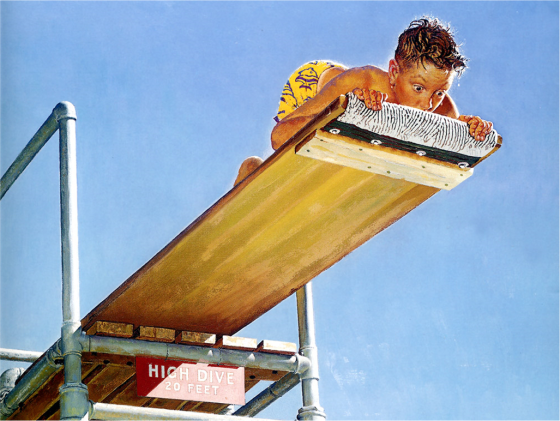Sink or swim…
is a phrase used to describe the myth that when you come face to face with failure (sinking), you’ll eventually figure out some way to succeed (swimming).
But make no mistake, “sink or swim” is a myth. Most of the time you don’t magically learn how to swim when tossed into the pool. You only figure out (hopefully) how not to sink. In other words, you learn how to tread water.
And now, here you are; years after being tossed in the pool and thankfully you’re not sinking. But you’re not exactly swimming either. You’ve learned how to successfully tread water, which is good for keeping the water out of your face but bad for trying to get anywhere.
It’s time to stop treading water and learn how to use your arms and legs to powerfully stroke and kick the water in order to get where you want to go.
Here are three things to remember when making the transition from “not sinking” to “swimming.”
- Get used to getting your face wet. In other words it’s time to embrace the discomfort that comes with learning something new. Stop stressing out about keeping your face dry. Go under water! Sure you’ll get water in your eyes and up your nose at first but you’ll figure it out if you can just get over the hurdle of fear. Water in your face is never as bad as the fear tries to tell you it is. Any time you do something new, it’ll be uncomfortable at first. But that’s the way of all adventure…and the best part about any great story! Discomfort means you’re learning and growing and that’s a critical part of living life to its fullest.
- Start with the basics. Just work on the simple act of reaching out and stroking the water with your arms, kicking with your feet and turning to the side to breathe. Don’t try to swim across the lake. Just work on a few strokes at a time. See your new venture as a series of steps that will eventually get you where you want to go. How do you swim across the English Channel? One arm stroke at a time. You’ll accomplish this adventure the same way. Start small, develop your confidence, and then graduate to the deep end.
- Turn to a coach for help. When you’re first learning to swim, having someone to hold you up while you get accustomed to the feel of your arms passing through the water and your feet paddling is a good idea. You can get used to how successful swimming is supposed to feel before you’re actually out there on your own. A coach can also correct the stuff you can’t see. With your head in the water, there’s no way you have the perspective to see everything. A coach can point out the stuff you need to work on that might not even occur to you. Plus, a coach will be that friendly face you see and the encouraging voice you hear when you inhale half the lake and want to quit.
No one wants to sink. But spending your life just treading water is no good either.
Stop being content with just keeping your face dry. No one ever accomplished anything worthy without some discomfort. It’s time to start swimming!





















Very good post! Thank you for the encouragement!!